An Alpine Pilgrimage: Following the Jakobsweg
From alpine passes to abbey cloisters, my 150-mile Swiss pilgrimage walk.
Eleven days after my father died, I set out with my wife for Switzerland to walk from Einsiedeln to Fribourg. In the month before his death, I’d driven two hours each day to his bedside. Those vigils became, without my intending it, a kind of training in pilgrimage: patient repetition, prayer, surrender. I took that rhythm with me onto the Swiss trails.
We followed a stretch of the Jakobsweg — the Way of St James — Switzerland’s section of the ancient network of paths leading across Europe to Santiago de Compostela. Monks, farmers, nobles and vagabonds have walked it for centuries, seeking healing, absolution, or simply the grace of the road itself.
Our own route — 150 miles on foot, from high Alps into rolling farmland, past baroque churches and Protestant chapels — became a journey of discovery and delight. We met fellow pilgrims, generous locals, and even a gregarious Kiwi Messianic Jew selling craft beer. We paused in chapels painted with saints, laughed over pastries shaped like priests’ hats, and watched storms sweep the mountains before finding rest with the Cistercian sisters of La Maigrauge Abbey.
This post is my attempt to tell that story: not only the landscapes and churches, but also the grief I carried, and the grace that surprised me along the way. Pilgrimage, I discovered, is always a paradox: both a journey outward through landscapes and a journey inward from loss towards hope.
Aachen and Cologne
Before setting foot in Switzerland, Sarah and I travelled by train from Abergavenny, near our home in Wales, through London and the Channel Tunnel to Aachen and then Cologne. The journey felt like part of the pilgrimage itself, carrying us from the parched fields of drought-stricken Britain into the increasingly green landscapes of France, Belgium and Germany.
In Aachen, we joined the queue of pilgrims to gaze at the gilded reliquary of Charlemagne and stand beneath the shimmering mosaics of the cathedral — monuments to the long marriage of faith and power, dazzling and disquieting in equal measure.
Cologne was different. We admired the vast Gothic vaults of the Dom and paid our respects at the shrine of the Three Magi, which I’d long wanted to see. Yet what moved me most was not in the cathedral at all but in the nearby church of St Ursula’s. Here, a simple memorial honours the priests, monks and nuns of Cologne who were imprisoned and killed in Nazi camps. Their names are cut into pale stone, flanked by candles and a plain wooden cross. No gilded reliquaries, no imperial splendour — only the testimony of lives cut short in faithfulness.
I found myself unexpectedly undone by those names. Charlemagne’s casket glittered; the Magi’s shrine gleamed with promise. But this modest wall spoke of witness in weakness, fidelity in the face of terror. Standing there, I thought of my father’s own quiet perseverance, and of the countless ways Christian hope is borne through suffering. I recognised in the communion of these saints a solidarity that lends even grief a measure of dignity.
A Blessing in Einsiedeln
The next day we crossed into Switzerland by rail and arrived at Einsiedeln. The abbey church dazzles with baroque exuberance: gold, marble, fresco, all gathered around the revered Black Madonna. For over a thousand years, monks here have ordered their days by psalms and prayer — though amid a level of ornament my Anglican sensibilities struggle to appreciate. Baroque has always left me cold, evoking more of an aristocrat’s boudoir than the numinous.
That evening we joined local worshippers for Mass, going forward at communion for a pilgrim’s blessing. The liturgy was reverent and the church decently filled, the congregation singing sturdy German hymns I tried to join without success. Monks from this very abbey once travelled to Indiana to establish St Meinrad’s Archabbey, not far from where my father had lived for many years before returning to Britain to be near me.
Grief sharpens the eye for such links, however slight. The mind begins to stitch together threads it might otherwise leave loose, tracing hidden patterns across time and place. My own connection was tenuous enough, yet it gave me quiet satisfaction, as though the path we’d chosen had reached back into my father’s story, binding it for a moment to my own.
Treks in Europe have a way of doing that: collapsing time, weaving past and present, the living and the dead, into a single fabric. To walk the Jakobsweg is to step into a different calendar, where memory is alive and the living and the dead bump shoulders.
Into the Mountains
The next morning we shouldered our packs and began the long walk westward. Under a warm sun, we started up the pleasant valley, pausing after our first hour outside another Benedictine monastery to say Morning Prayer. Our plan was to keep the offices each day, and I also resolved to offer a short prayer in every church we entered — usually for the people of the towns and villages through which we passed, that God might bless them in their ordinary lives.
The sun was warm, the breeze light, the moment perfect in its simplicity. After our first serious climb we reached a tiny chapel perched above a forest dropping down towards Schwyz and Lake Lucerne. It was beautiful in its modesty. Inside, locals had left small pouches with prayers, a small candle with matches, and jars of honey and balm for weary pilgrims. We lunched on bread, local cheese and sausage before descending into Brunnen on the shores of Lake Lucerne. The ice cream we devoured there tasted like manna from heaven.
The days that followed were beautiful and brutal in equal measure. The landscape was breath-takingly glorious but the ascents under the hot sun seemingly relentless. Along the way, we met Tommy, a Hong Konger from Atlanta who joined us for Morning Prayer; Julian, a young man seeking escape from digital noise; and an older Taiwanese couple walking steadily at their own pace. Almost everyone greeted us warmly, whether or not they spoke English. Long treks break down barriers and remind you of the kinship beneath difference. In a world of nationalism and polarisation, it was good to be reminded of simple human decency.
That second evening we stayed at the Rickenbach-Maria convent, lodging in the Pilgerhaus beside its chapel. The church walls were lined with ex-votos — hand-painted plaques stretching back to the seventeenth century, each one thanking Our Lady for her help in moments of crisis. Here was a gallery of griefs and deliverances, recorded in colour and script, a visual cloud of witness binding us to generations past.
The Saint Who Survived on the Eucharist
The next stage brought us to Flüeli-Ranft, home of St Nicholas of Flüe, Switzerland’s patron saint. A fifteenth-century farmer and soldier, he left his family to live as a hermit in the Ranft gorge. For decades he survived on nothing but the Eucharist, his counsel sought by leaders who credited him with preventing civil war. Today, chapels and churches in the valley are covered with murals depicting his life: visions, miracles, scriptural scenes.
After a long, hot day of walking, we entered those painted sanctuaries with relief. The colours were vivid, the saints alive on the walls and a veritable army of saints gazing down from the ceiling. I thought again of Cologne’s martyrs: Nicholas of Flüe fasting unto holiness, the Cologne priests dying in the camps. Different centuries, different fates, yet all woven into the same tapestry of witness.
Our Gasthaus that night sat beside a grand hotel, a kind of Swiss version of Wes Anderson’s Grand Budapest. We gladly ate our dinner there, thinking it was included in the price, only to discover the bill the next morning. I suppose that pilgrimages have a way of humbling you — sometimes with arduous days on paths, sometimes by pillaging your bank account.
Rain, Detours, and the Eiger
By the time we reached Brünig Pass the following evening, the weather had finally turned. On the next morning, sheets of rain forced us to abandon a few miles of our route and take the train instead. In Meiringen, we explored the Protestant church, its medieval murals miraculously preserved. The elders had restored the undercroft to reveal its Catholic past, though curiously without naming it as such. Still, it whispered through cracks of Protestant plaster.
We next visited the thundering Aare Gorge before riding the funicular to Reichenbach Falls, scene of Sherlock Holmes’s final battle with Moriarty—a personal delight. My family has ties to Conan Doyle: Inspector Lestrade was inspired by my great-grandfather’s cousin, Joseph Alexandre Lestrade, while family lore claims Dr Watson’s portrayal contains echoes of my great-grandfather.
From there we followed a river through woodland and meadow, the Alps rising above. That night we slept in a hut set in pasture, the dawn air alive with the strange, almost mystical polyphony of cowbells. The sound reminded me of church bells back home, as if the very labour of grazing cattle were a kind of daily liturgy offered to the Creator.
The next day we entered Grindelwald and glimpsed at last the Eiger. For hours it loomed ahead, its summit veiled and unveiled by shifting clouds. The ascent was punishing, but the grandeur beyond words. We ended at Berghaus Bäregg, a hut perched above a deep ravine with glaciers hanging above. There I spoke with a Microsoft executive on holiday with his family, who’d taken turns carrying their disabled son along the paths.
In A Pilgrimage of Paradoxes I wrote of wonder hiding in the commonplace: rock, turf, cloud, sunlight. Walking beneath the Eiger I lived it again. Stone and sky became revelation.
From Alps to Riviera
At Lauterbrunnen we turned west, leaving the high Alps behind to rejoin the Jakobsweg at Interlaken. After a long hot tramp along the side of the lake, a steam paddle boat carried us across Lake Thun to Spiez, the wind in our hair, the water sparkling like the Mediterranean. After days of alpine austerity, it felt as if we had wandered into the Riviera.
The days grew gentler, the climbs softer. We passed through rolling farmland, forests already scented with autumn. One morning a massive brown shape lumbered out of the woods ahead of us. For a breathless instant we both thought it a bear. In fact, it was only a friendly dog.
Hospitality appeared in unexpected forms: a farm stand offering free drinks for pilgrims, each bottle wrapped with the parable of the Good Samaritan; vending machines dispensing local cheese, ice cream, and even meat, tiny farm shacks with local produce where walkers are simply trusted to pay. Here was abundance offered without fuss, a kind of rustic sacrament without ceremony.
Ruins and Anticipation
As we approached Fribourg, the landscape shifted again. We passed the ruins of an eleventh-century Cluniac monastery, toppled during the Reformation. In the small village churches, medieval murals survived beneath Protestant austerity. I found myself wondering what Britain might look like if our Reformation had stopped at iconoclasm, without the later Catholic revival. These reformed churches might be plain and unadorned, but thanks to State support, each and every one of them was tidy and well-maintained.
One day we sampled apple strudel and Pfaffenhüetli — pastries shaped like priests’ hats — and enjoyed the whimsy of it almost as much as the taste. Pilgrimage is made up not only of chapels and relics but also of small moments of delight. Be it pastries, local cheese, or dinners at the end of a long day, we were continually reminded that grace comes even in edible form.
Arrival in Fribourg
Our final day carried us past a ruined castle, chapels adorned with images of St James dressed as a pilgrim, and cows with shaggy coats fit for medieval tapestries. We noticed the river that divides Catholic from Protestant Switzerland bears the name “Sense.” Beyond Sense lay Fribourg, our journey’s end.
At last we arrived at La Maigrauge Abbey, a thirteenth-century Cistercian convent on the edge of the city. For thirty-six hours we lived by the sisters’ rhythm, praying some of the hours with them in their ancient church. Alongside us were a handful of people on retreat—a French finance man who chatted with me about renewed faith among the young in France, a Quebecoise woman freshly graduated and now enjoying a few months working on French and Swiss farms, three German women finding spiritual renewal, and a woman that seemed to be exploring a vocation to religious life. The chaplain, a retired archbishop of Tours, helped the sisters with providing our meals with friendly courtesy. At lunch and dinner, wine was poured — because here civilisation has not forgotten that the table is a place of grace.
I could have remained there for a week. Instead, we had just enough time to be renewed, spiritually and physically, before turning homeward.
Coda: Grief and Grace
From Fribourg we travelled by train to Bern and Basel, where we visited more churches — Catholic, Protestant, even Old Catholic — marvelling at the Swiss care for their medieval fabric. In Basel’s Franciscan cloisters I admired murals of the Virgin’s life, and a painting of Lepanto that unabashedly celebrated the defeat of the Turkish fleet by Catholic forces.
But my mind was already turning homeward: to Wales, to our spaniels, to my father’s funeral. I always feel melancholy when a long walk ends, but this time it was tempered by peace. The pilgrimage hadn’t erased grief or answered the ache of his absence. Often I felt it sharply, realising I couldn’t tell my father about sights he would have loved. Yet the journey gave me something harder to name: the sense that loss and hope can be carried together, that to walk from sorrow is also to walk into grace. Amid such beauty, even grief felt powerless.
We’d walked 150 miles, climbed more than 28,000 feet, crossed from mountains to rivers, from Catholic abbeys to Protestant chapels, from relics of emperors to jars of honey left by villagers. We had prayed, stumbled, laughed, and eaten pastries shaped like priests’ hats. Through it all I carried my father, delighted in the uninterrupted company of the woman I love, and rested in the faith that undergirds everything for me.
Next year we hope to continue the Jakobsweg to the French border, perhaps in time even all the way to Santiago. For now, I return to the tasks that await — above all, arranging my father’s funeral — as my sabbatical draws towards its close. Yet I know that somewhere beneath the surface, the rhythm of the walk continues: step after step, prayer after prayer, grief carried into grace.



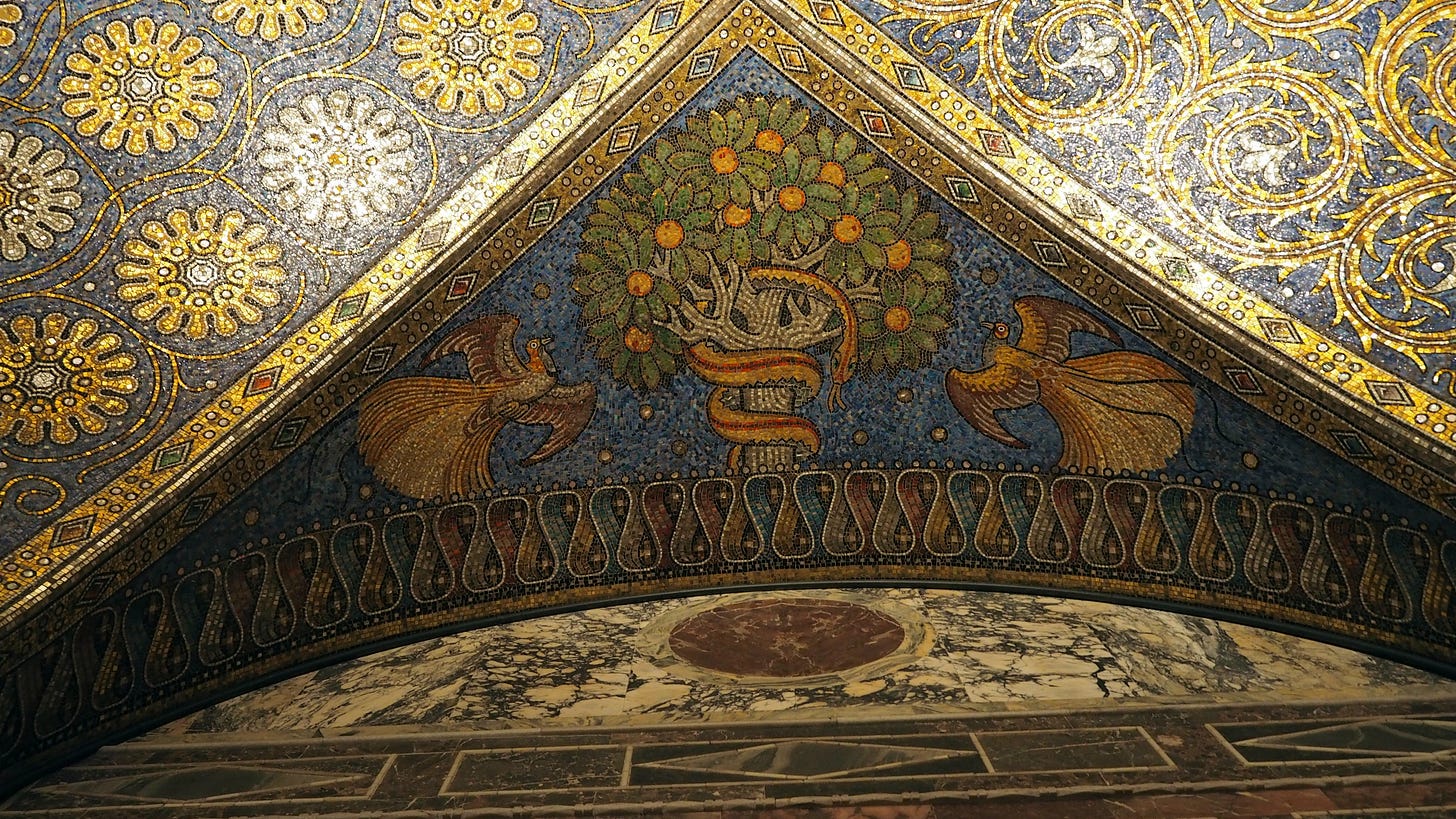
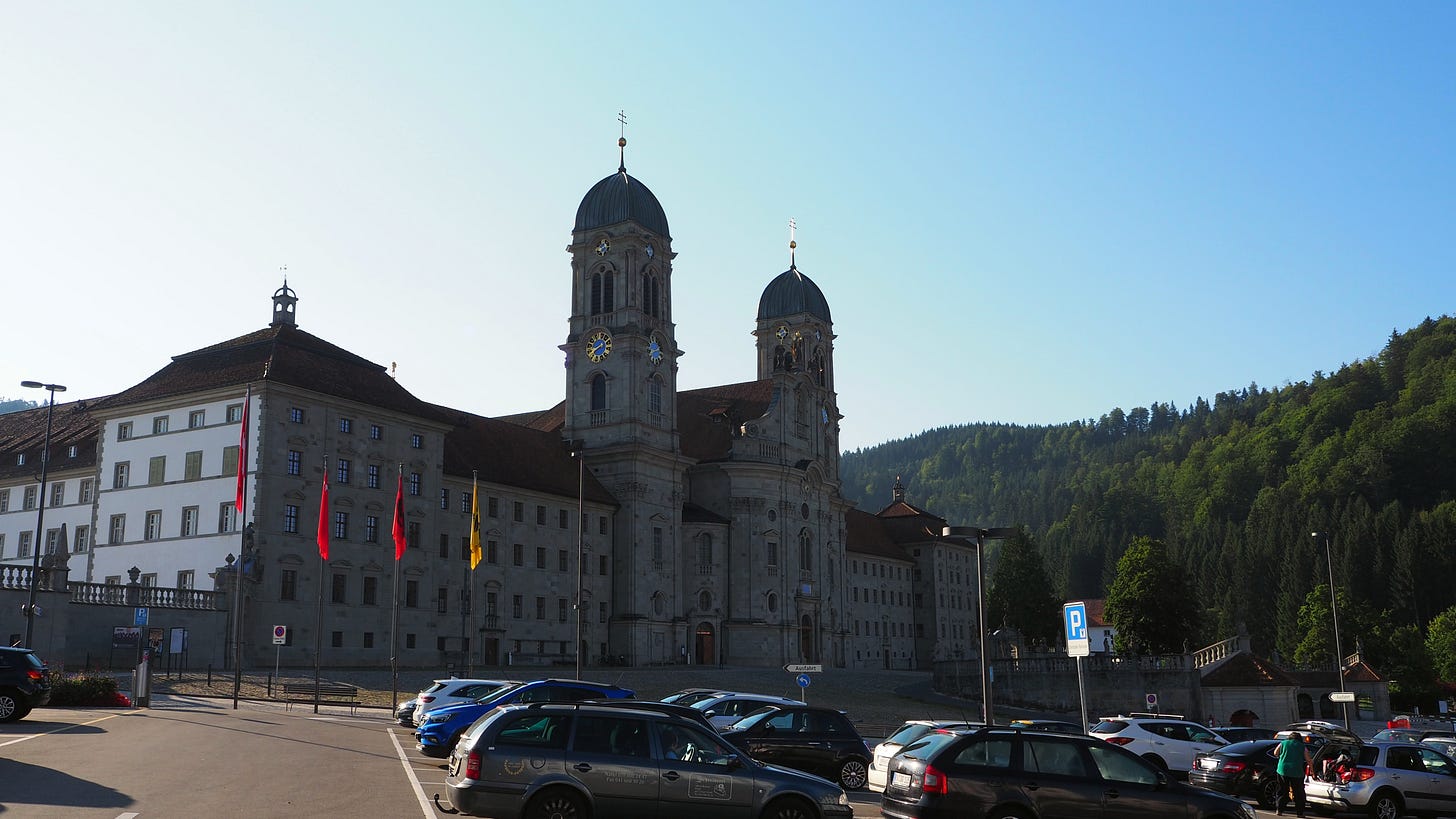

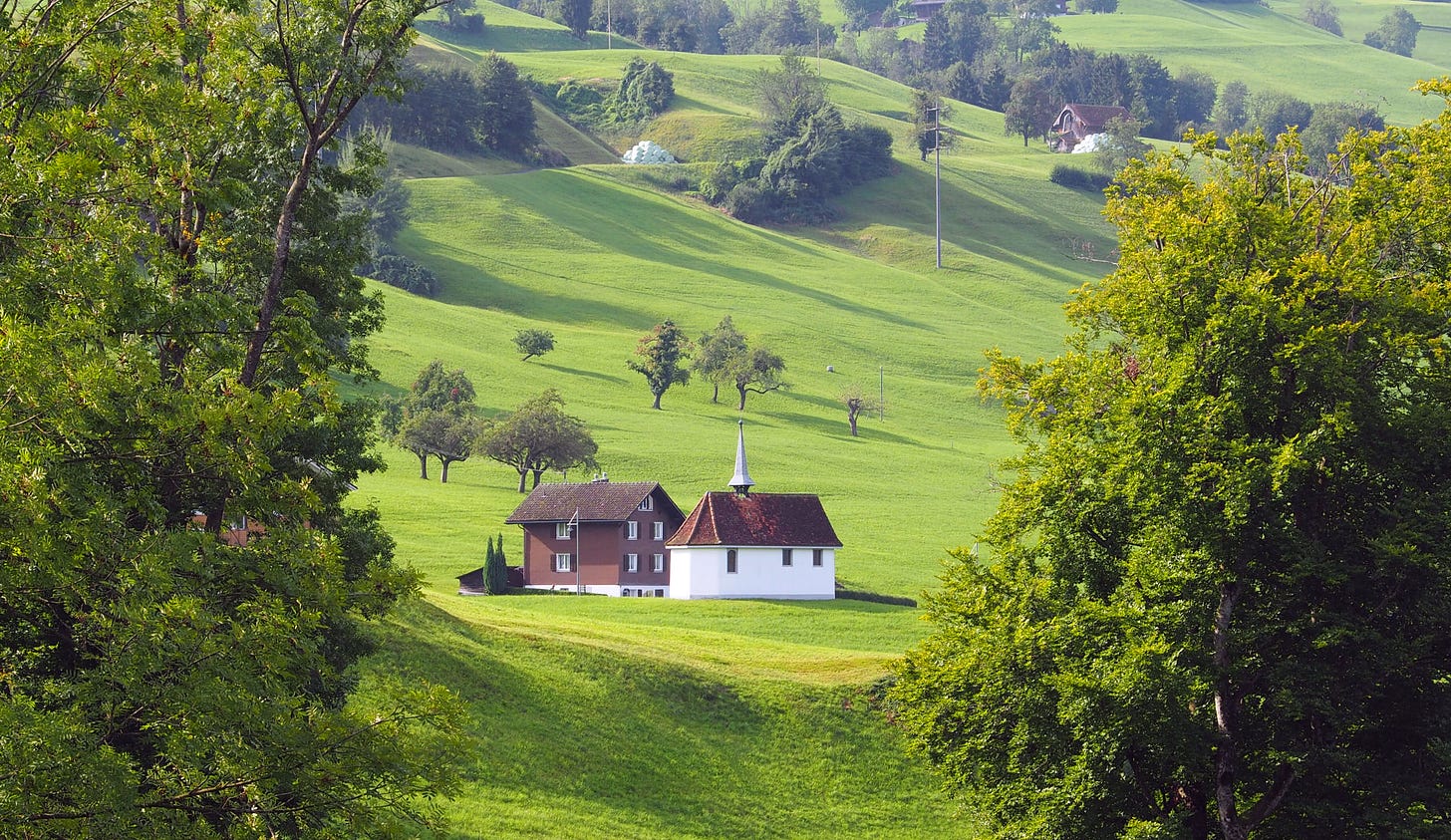
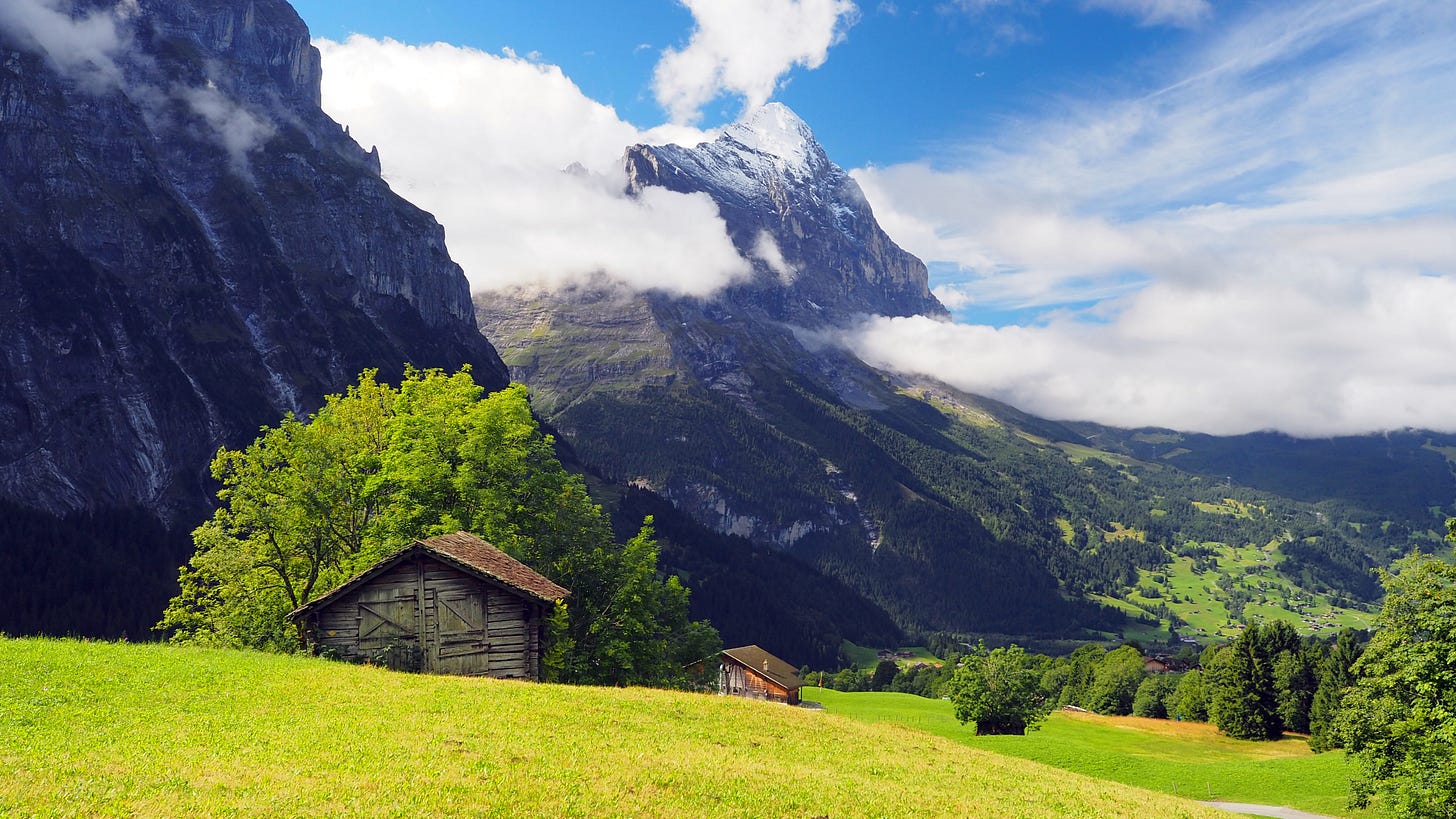

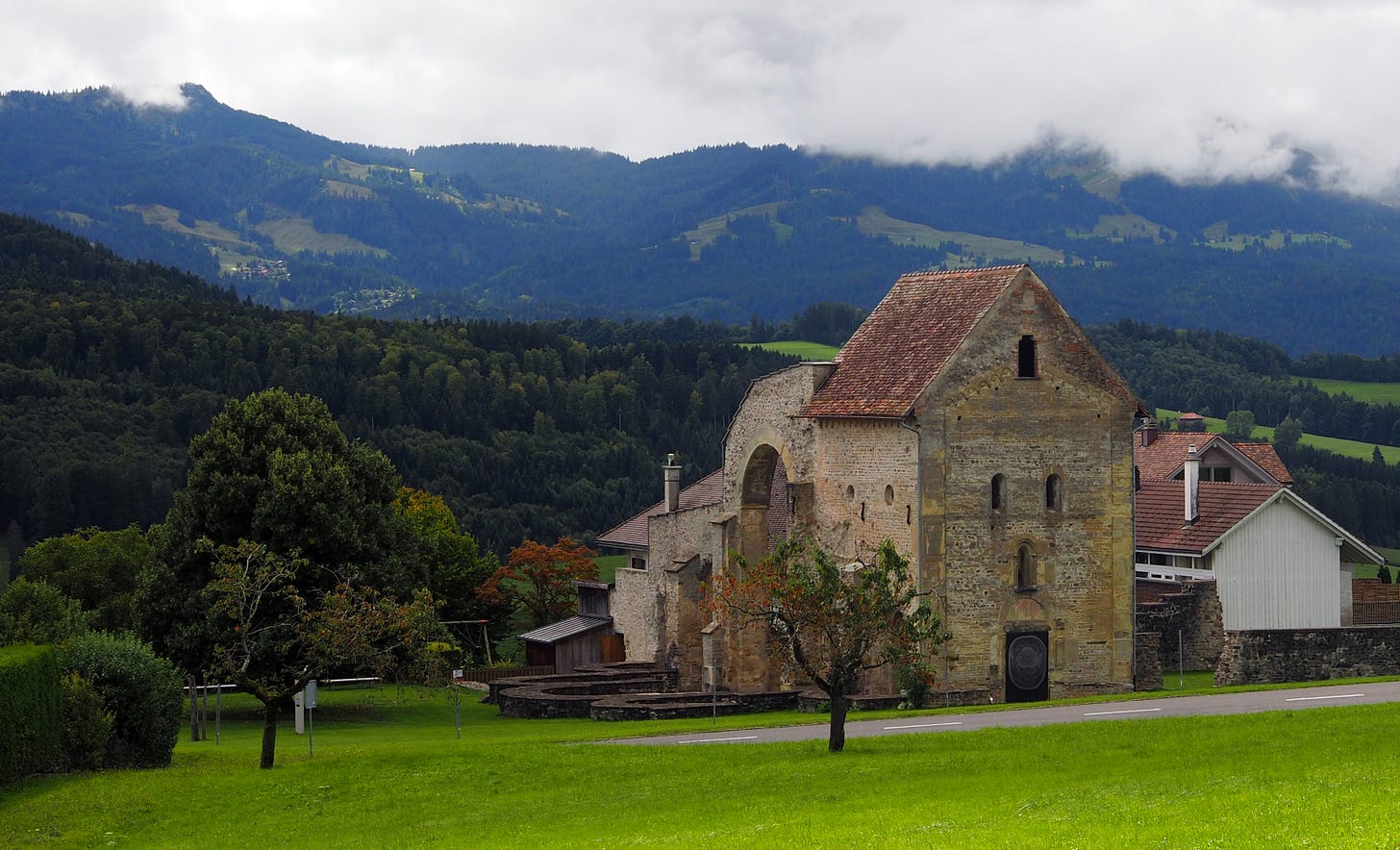

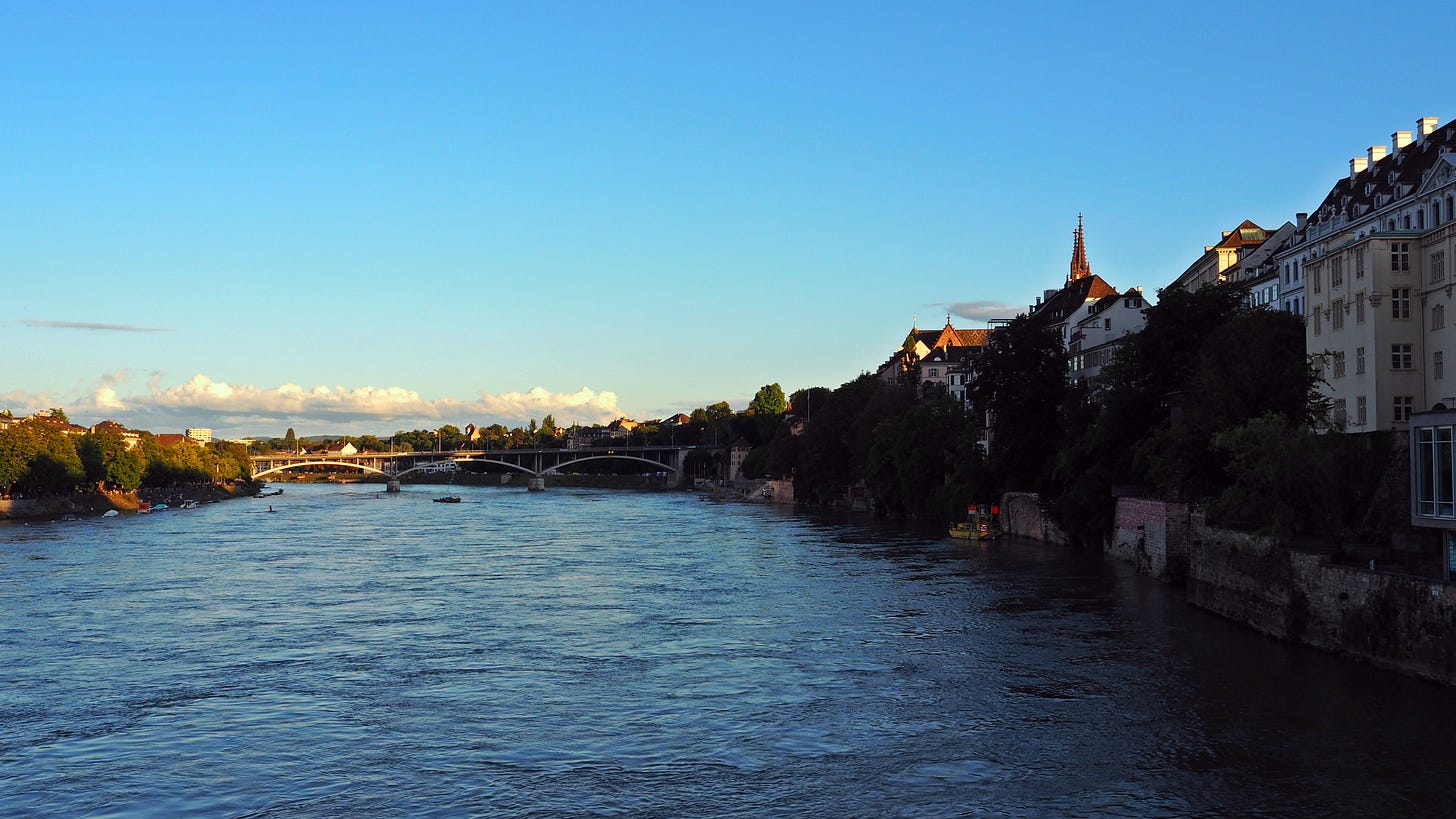
Thank you for sharing this lovely journey with us!
A well told reflective tale, (of course!) , an excellent and well timed accompaniment to breakfast!